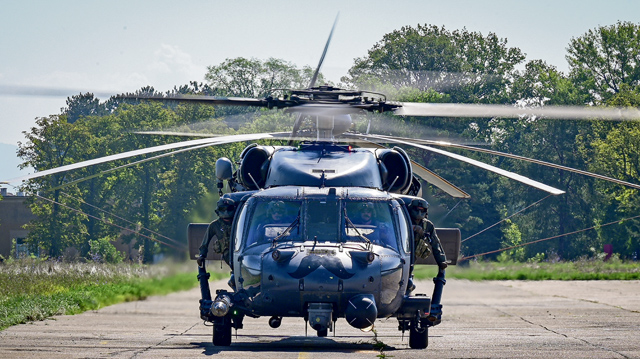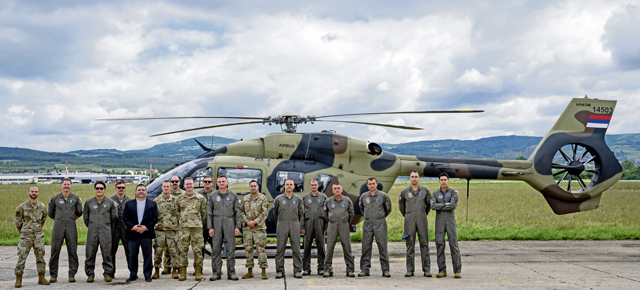
For the first time in over 20 years, the U.S. Air Force and Serbian air force partnered together to conduct the first helicopter flight formation in history and participate in rotary wing search and rescue operations, Aug. 7-11, at Batajnica Air Base and Sgt./Pilot Mihajlo Petrovic Air Base, Serbia.
To mark the beginning of this partnership training, a Serbian air force H145M and U.S. Air Force HH-60G Pave Hawk helicopter flew in formation to Serbia with U.S. Ambassador to Serbia, Christopher R. Hill, on board, followed by pre-flight procedures, and briefings on search and rescue tactics for the remainder of the week.
“Having Ambassador Hill present during the formation flight shows not only solidarity between the Department of State and Department of Defense, but also our support and commitment to maintaining great relations with the Serbian military,” said U.S. Air Force Tech. Sgt. Erik Silva, 435th Contingency Response Support Squadron aircraft maintenance air advisor.
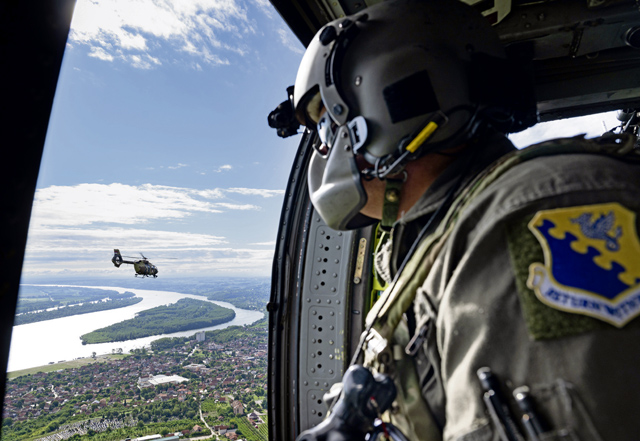
The hands-on training and instructional time were spent between American Airmen and Serbian airmen where both groups shared knowledge on search and rescue tactics and procedures.
“Throughout the training and discussions held this week, we hope the Serbian military can gain some of our search and rescue knowledge acquired from trial and error,” said Staff Sgt. Noah Davila, 56th Rescue Squadron special missions aviator. “And in the future they can become search and rescue experts as well.”
This interoperability enables seamless coordination during joint operations, ensuring an effective and efficient response to potential threats, Davila said.
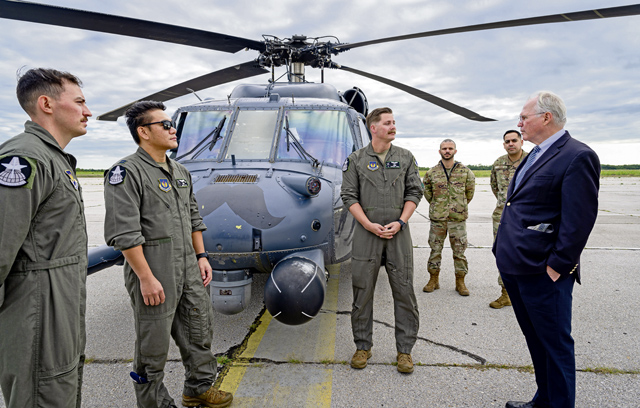
“Moving forward, we hope to conduct more flight formations and scenario based training,”Silva said. “The Serbians have been very welcoming, professional and eager to learn, and I cannot wait to see where this partnership progresses in the upcoming years.”
The event allowed U.S. Air Force and Serbian Air and Defense Force personnel to practice mixed aircraft formation, requiring communication and skill from both crews. They were also provided the unique opportunity to review videos of real world search and rescue operations to understand their capabilities used to assist and lead rescue attempts.
“As joint operations progress, it is crucial to maintain open lines of communication, nurture trust, and continue investing in collaborative initiatives ensuring a safer and more prosperous future for the Balkans,” said John A. Castillo, U.S. Air Forces in Europe – Air Forces Africa deputy branch chief, eastern Europe/ USAFE desk officer for Serbia. “The U.S. seeks to be the partner of choice for capability and interoperability across Europe, for NATO and non-NATO members.”
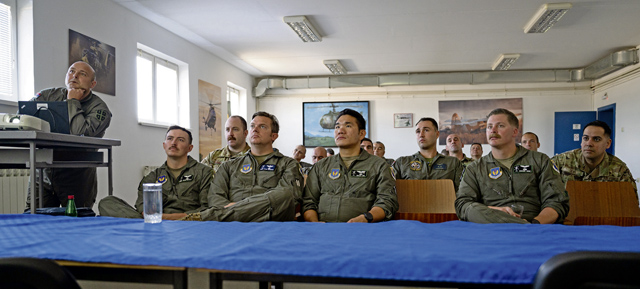
The partnership between the U.S. Air Force and Serbian air force in conducting training such as these, not only strengthens bilateral relations, but also contributes to regional stability.
“In the future, we plan to further our cooperation by conducting more joint flights, and expand to rescue demonstrations outside Serbia, where both the SAFAD and the U.S. Air Force can demonstrate how each country is able to perform search and rescue,” Silva said. “In addition, we hope to incorporate medical evacuation scenarios and operate together to conduct these training scenarios.”
